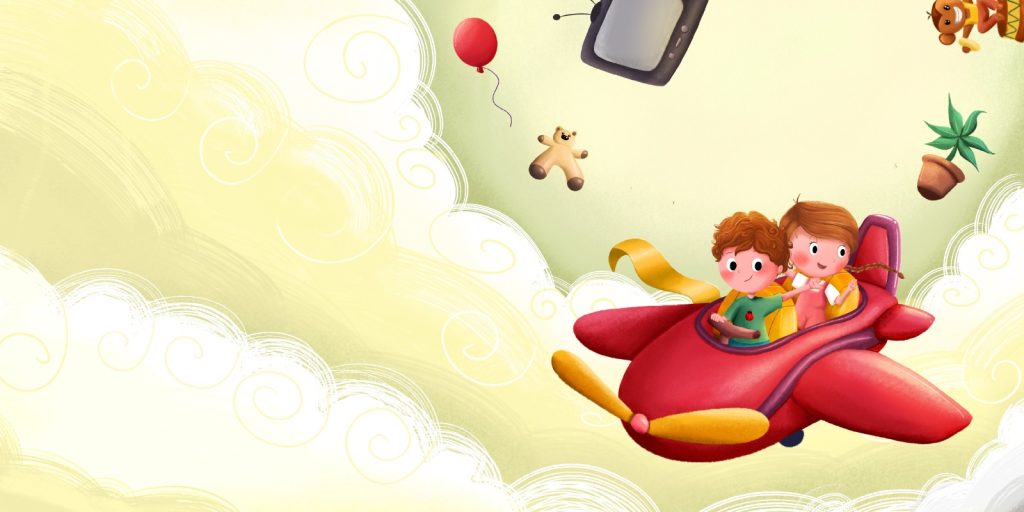Every unforgettable children’s book begins with a character who feels alive one who leaps off the page, tugs at hearts, and stays in the reader’s imagination long after the story ends. But how does a simple drawing transform into a soul that children connect with? The secret lies in the art of character creation where emotion meets imagination, and sketches evolve into living personalities.
In children’s illustration, crafting believable, expressive, and lovable characters is what turns a story from ordinary to magical. Let’s explore how illustrators and authors can breathe life into their story characters from the first sketch to the final emotional heartbeat.
1. Every Great Character Starts with a Purpose
Before the pencil touches the paper, ask yourself: Why does this character exist?
Every illustration should serve the story. In character design for children’s books, purpose shapes every creative decision—from appearance and color palette to posture and emotion. A character’s visual identity must reflect their role in the story.
For example:
- A curious child might have wide eyes and loose, playful clothing.
- A mischievous animal might be drawn with exaggerated gestures and bold colors.
- A wise mentor might have soft lines and calm tones to convey warmth and stability.
When the design aligns with the character’s purpose, readers instinctively understand their personality before reading a single word.
2. Sketching the Foundation – Finding Shape, Silhouette, and Personality
A strong silhouette can tell a story on its own. Think of classic children’s book characters—Winnie the Pooh’s round shape conveys warmth and comfort, while the Cat in the Hat’s tall, lanky figure suggests playfulness and chaos.
In the children’s book illustration process, start with simple shapes to define personality. Round shapes feel friendly and safe, while angular designs suggest energy or mischief.
Experiment with proportions and poses until the sketch “feels” alive. When illustrators focus on shape language early, they establish personality through form an essential part of visual storytelling.
Pro tip: Keep your first sketches loose. Don’t chase perfection chase personality.
Also Read:Why Strong Characters Matter More Than Plot
3. Expressions: The Window to Emotion
Children read faces before they read words. That’s why creating expressive characters is vital to emotional storytelling.
A raised eyebrow, a tilted head, or a teardrop can communicate volumes. In fact, young readers often interpret emotions from illustrations before understanding text, making expression a key storytelling tool.
Here’s how to make expressions work:
- Use exaggeration—larger eyes, expressive mouths, and dynamic eyebrows amplify emotion.
- Maintain consistency across pages. The same smile or frown should look recognizable in different scenes.
- Think about emotional arcs—how your character’s face changes from curiosity to surprise, or fear to joy, as the story unfolds.
Illustrations that capture authentic emotion help readers empathize with characters instantly.
4. Color: The Language of Feelings
Color breathes emotional depth into every illustration. In children’s book illustration, color choices shape how readers perceive a scene and connect with characters.
- Warm tones (reds, oranges, yellows) evoke happiness, courage, and warmth.
- Cool tones (blues, greens, purples) suggest calmness, mystery, or sadness.
- Muted palettes work beautifully for gentle bedtime stories.
- Bold contrasts energize adventurous tales.
For instance, a character dressed in sunny yellow can represent optimism, while soft blues can express innocence or wonder. Choosing the right palette enhances emotional storytelling and builds visual harmony across all pages.
5. From Flat Illustration to Living Character
The difference between a drawing and a character lies in intentional detail.
To make your illustrations feel alive:
- Focus on body language—how a character stands, moves, or reacts tells a story.
- Add props that support their personality: a magical wand, a teddy bear, or a backpack.
- Integrate environmental storytelling—show how the world interacts with them. A character’s reflection in water or a gust of wind tugging at their clothes adds realism.
This process transforms flat art into emotionally dynamic characters that readers connect with.
Also Read:10 Pro Tips for Smooth Author Illustrator Collaboration
6. Collaboration Between Writer and Illustrator
A powerful story emerges when the writer’s imagination and the illustrator’s vision work in harmony. Authors provide personality traits and backstory; illustrators bring those ideas to life visually.
During the children’s book illustration process, collaboration ensures that the visual tone matches the emotional rhythm of the narrative. For instance, a quiet, reflective story might use gentle lines and pastel shades, while an adventure tale benefits from energetic strokes and vibrant hues.
This partnership transforms ideas into cohesive storytelling—where the words and pictures breathe the same emotional air.
7. Building Relatability – Giving Characters a “Soul”
Children connect most with characters who mirror their own emotions—curiosity, joy, fear, or hope. To develop relatable characters, focus on emotional authenticity over complexity.
A simple smile, a small mistake, or a heartfelt gesture makes a character feel human. Show vulnerability. Maybe your character gets scared in the dark or struggles to make friends. These moments of honesty create empathy and make readers say, “That’s me!”
When children see themselves in the pages, they form emotional bonds that last far beyond the story.
8. Illustration Techniques That Add Life
Modern illustrators use a mix of traditional and digital techniques to infuse energy into art. Consider:
- Textured brushes to mimic hand-drawn warmth.
- Layered lighting to highlight emotions and depth.
- Dynamic compositions that lead the eye through the story.
- Soft gradients for dreamlike storytelling.
When combined with expressive design, these techniques elevate every illustration from sketch to soul.
Conclusion
Creating unforgettable characters isn’t just about drawing—it’s about feeling. Every sketch, color, and expression tells part of a child’s emotional journey. When you combine thoughtful character design for children’s books with emotion-driven illustration, you craft stories that speak to the heart.
At The Rainbow Stories, we help authors and illustrators turn imagination into emotion. From concept sketches to final illustrations, our goal is to breathe life into your story characters—so they don’t just appear on the page, but live there.
Ready to bring your characters to life?
Visit The Rainbow Stories and let’s create illustrations that touch hearts, one sketch at a time.







